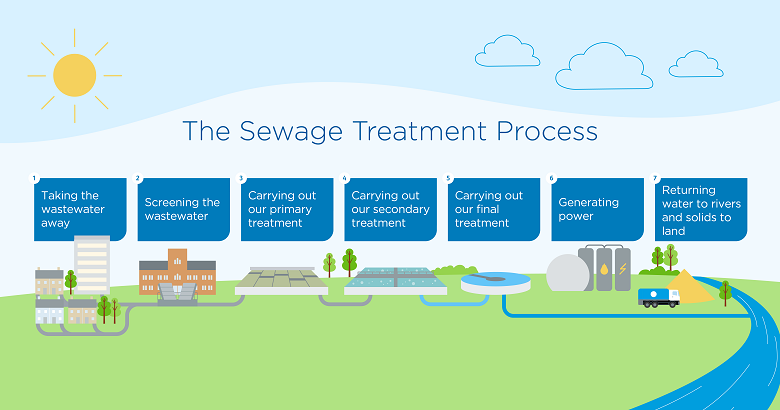Exploring the Function of Biotechnology in Waste Water Treatment
Exploring the Function of Biotechnology in Waste Water Treatment
Blog Article
Strategic Approaches to Boost Waste Water Therapy Effectiveness and Minimize Environmental Effect
In the world of waste water treatment, the quest for enhanced performance and minimized environmental influence is a continuous challenge that demands critical services. The integration of innovative treatment innovations, energy-efficient processes, resource recovery methods, boosted nutrient removal techniques, and clever tracking and control systems stands for a multifaceted framework for resolving these pressing problems.
Advanced Treatment Technologies
Innovative membrane filtering systems have actually transformed innovative wastewater treatment processes, significantly improving the removal of pollutants. These cutting-edge systems operate by requiring water via a semi-permeable membrane, successfully dividing pollutants from the water stream. The membrane layer's microscopic pores catch toxins such as bacteria, viruses, and suspended solids, enabling just detoxified water to pass through. This technology has actually shown to be extremely reliable in getting rid of a variety of contaminants, including pharmaceuticals, hefty steels, and natural substances, which are commonly testing to remove via traditional treatment approaches.
Additionally, membrane purification systems supply countless benefits over conventional therapy methods. Additionally, these systems are highly flexible and can be easily incorporated into existing therapy plants or made use of as standalone systems for decentralized applications.
Energy-Efficient Procedures
The assimilation of energy-efficient procedures in wastewater therapy systems is essential for enhancing resource application and minimizing operational prices. One vital method to improving power performance in wastewater therapy is the utilization of sophisticated oygenation systems, such as great bubble diffusers or surface area aerators, which can boost oxygen transfer performance and decrease power intake.
In addition, maximizing procedure control and automation via using sophisticated sensing units and keeping track of systems can improve general energy effectiveness by changing operations in real-time based on actual demand and conditions. Implementing energy audits and on a regular basis checking power performance indications are essential techniques to recognize areas for enhancement and track energy-saving efforts efficiently. In general, the adoption of energy-efficient processes in wastewater therapy not only benefits the setting however likewise adds to long-lasting cost financial savings and functional sustainability.
Resource Recuperation Strategies
With a concentrate on maximizing resource utilization and sustainability in wastewater therapy systems, the application of resource healing strategies arises as an essential element in enhancing functional effectiveness. Resource recovery strategies in wastewater therapy include the identification and removal of useful resources from the waste stream, thus turning what was as soon as thought about waste right into an important asset. By applying resource recuperation techniques such as nutrient removal and recuperation, energy generation from raw material, and the manufacturing of reusable water, wastewater therapy plants can lessen environmental effect while optimizing effectiveness.

Boosted Nutrient Removal Techniques
Executing advanced nutrient elimination techniques is necessary for optimizing the performance of wastewater treatment systems. One of the key strategies used for boosted nutrient removal is the process of organic nutrient removal (BNR), which entails the removal of nitrogen and phosphorus with organic processes.

In enhancement to BNR, advanced therapy methods such as membrane layer bioreactors (MBRs) and created marshes can additionally be utilized to improve nutrient removal effectiveness. By integrating these advanced nutrient removal strategies into wastewater therapy sectors, systems and municipalities can successfully reduce nutrient pollution and shield the atmosphere.
Smart Tracking and Control Solution
Utilizing cutting-edge modern technology, the integration of wise monitoring and control systems reinvents the operational performance of wastewater therapy centers. These systems integrate sophisticated sensors and information analytics to continuously monitor crucial specifications such as pH levels, turbidity, liquified oxygen, and circulation rates in real-time. By accumulating and evaluating this data, operators can acquire beneficial understandings into the performance of the therapy processes, making it possible for aggressive read more modifications to maximize treatment effectiveness.
Smart surveillance and control systems likewise sustain remote tracking capacities, allowing drivers to accessibility real-time information and control features from off-site places. This remote accessibility improves functional flexibility and responsiveness, allowing speedy interventions in instance of system breakdowns or changes in influent quality. The predictive maintenance abilities of these systems aid prevent tools failings and decrease downtime, inevitably improving the general dependability of wastewater therapy procedures.
Conclusion
To conclude, critical strategies such as advanced treatment innovations, energy-efficient procedures, source recuperation strategies, enhanced nutrient removal techniques, and clever surveillance and control systems play an important function in improving wastewater therapy effectiveness and decreasing environmental impact. By implementing these techniques, wastewater treatment plants can improve their general performance, minimize power consumption, recoup valuable resources, and ensure compliance with ecological laws. These strategies are crucial for sustainable and reliable wastewater monitoring practices.

In verdict, calculated strategies such as sophisticated therapy technologies, energy-efficient procedures, resource recuperation techniques, improved nutrient elimination techniques, and wise surveillance and control systems play an important duty in enhancing wastewater treatment performance and minimizing environmental impact.
Report this page